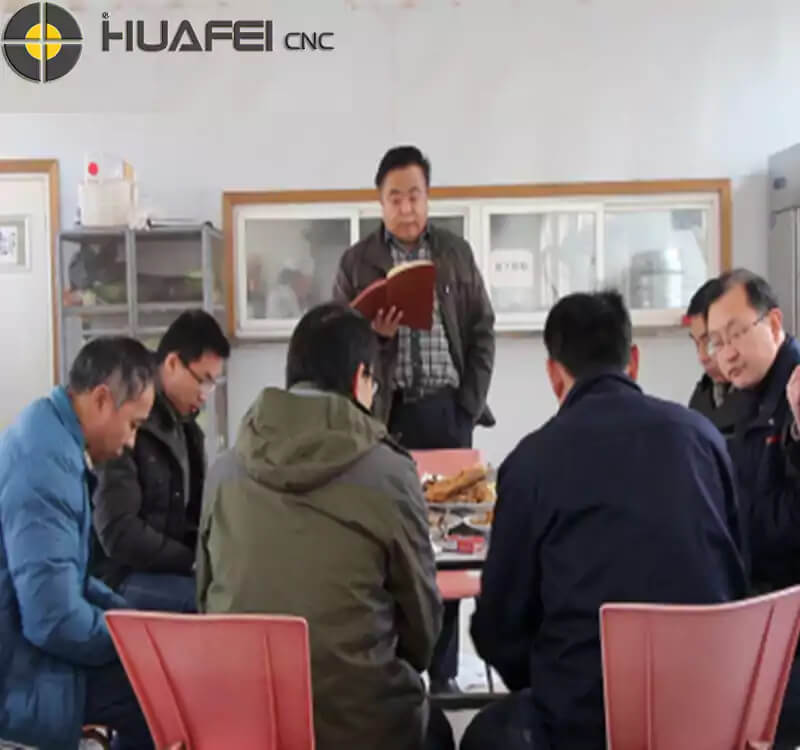
2015 Hua Fei CNC company dinner
How to choose a suitable welding positioner?
How to maintain the welding positioner?
Rescue measures for CNC cutting machine with large cutting error
How to protect a welding positioner?
How to purchase a good welding positioner?
Maintenance method of special welding chuck for positioner
How much do you know about the classification of the welding rotators?
Structure Types of Welding positioners
The 8 principles for choosing a welding positioner
Common fault problems and solutions of welding positioner
In modern industrial production, the application of robots is becoming more and more common. It can be used in combination with various welding positioners to achieve efficient and high-quality welding production. As one of the indispensable components of welding robot workstations, welding positioner's importance is no less than that of welding operation equipment.
At present, the welding positioner used with the robot has a variety of structural forms. The simpler of which is the fixed rotary platform, which is a single-axis welding positioner that can be driven by a motor or a pneumatic motor. Its own rotation speed is fixed. It can cooperate with the robot to rotate the workpiece by a certain angle according to the pre-programmed program.
At the same time, it is a single-axis positioner and a head frame welding positioner. Unlike the rotary platform, the rotation axis is horizontal. It is suitable for holding the position of a short and small workpiece. The head and tail frame positioner includes the head frame and tail frame, which is the most commonly used positioner for robot workstations.
In general, this welding positioner's head frame is equipped with a drive mechanism to drive the chuck to rotate around a horizontal axis; the tail frame is passive. If the length of the workpiece is large or the rigidity is small, it can be equipped with a drive mechanism on its tailstock and started synchronously with the headstock.
Since there is a single-axis positioner, there must be a two-axis positioner, such as a seat-type welding positioner, which can rotate and turn the workpiece at the same time. When used in conjunction with a robot, both the rotation axis and the turning axis are driven by a motor. They can be rotated and turned separately or simultaneously according to the instructions. It is suitable for workpieces with a more complex three-dimensional weld structure.
There is also an L-shaped positioner, which adds a cantilever up and down movement axis based on a two-axis to become a three-axis L-shaped positioner structure. It is characterized by a large slewing space. It is suitable for welding frame members with large external dimensions and a weight not exceeding 5 tons.
There are double-head welding positioners, double-seat welding positioners, and combined multi-axis welding positioners, both of which have unique characteristics in terms of structure and function.
One is the outrigger welding positioner. The other is the seat welding positioner, and the other is the two-seat welding positioner. In comparison, the outrigger welding positioner is structural. It has very good characteristics, and its operating range is relatively large. It also has better adaptability during operation.
However, the outrigger welding positioner is also flawed, usually manifested as poor overall stability. Be careful when using it to avoid adverse consequences.
